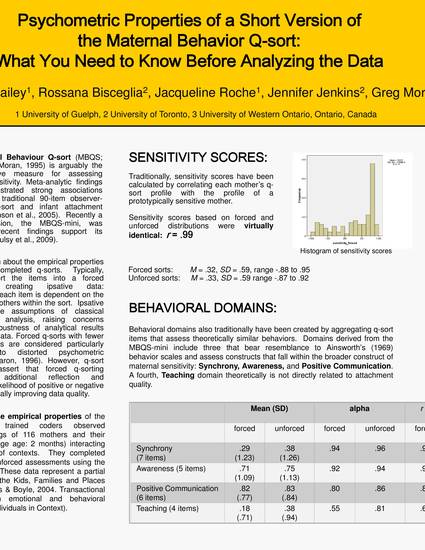
Presentation
Psychometric Properties of a Short Version of the Maternal Behavior Q-sort: What You Need to Know Before Analyzing the Data
Psychology Presentations
Document Type
Presentation
Publication Date
4-1-2009
Disciplines
Abstract
OVERVIEW • N =116 mother-infant dyads (2 months old) • Coders completed the MBQS-mini 2 ways—forced vs. unforced q-sort distributions—to determine whether psychometric properties differed.
SENSITIVITY SCORES: • were virtually identical:r= .99.
BEHAVIORAL DOMAINS: • Attachment related domains: esponsiveness, Non-Interference, Affective Communication. • For all 3 (but not the Teaching domain) forced and unforced were highly correlated, and high internal consistency.
CONCLUSIONS: • Results support the use of forced q-sort data, but show no benefits associated with using forced over unforced distributions. Internal consistency was higher for the unforced teaching domain.
Notes
Presented at Biennial Meeting of the Society for Research in Child Development, Denver, Colorado.
Citation Information
Heidi N. Bailey, Rossana Bisceglia, Jacqueline Roche, Jennifer Jenkins, et al.. "Psychometric Properties of a Short Version of the Maternal Behavior Q-sort: What You Need to Know Before Analyzing the Data" (2009) Available at: http://works.bepress.com/gregmoran/13/
